‘Elvis’: Giving New Meaning to the Life and Times of The King
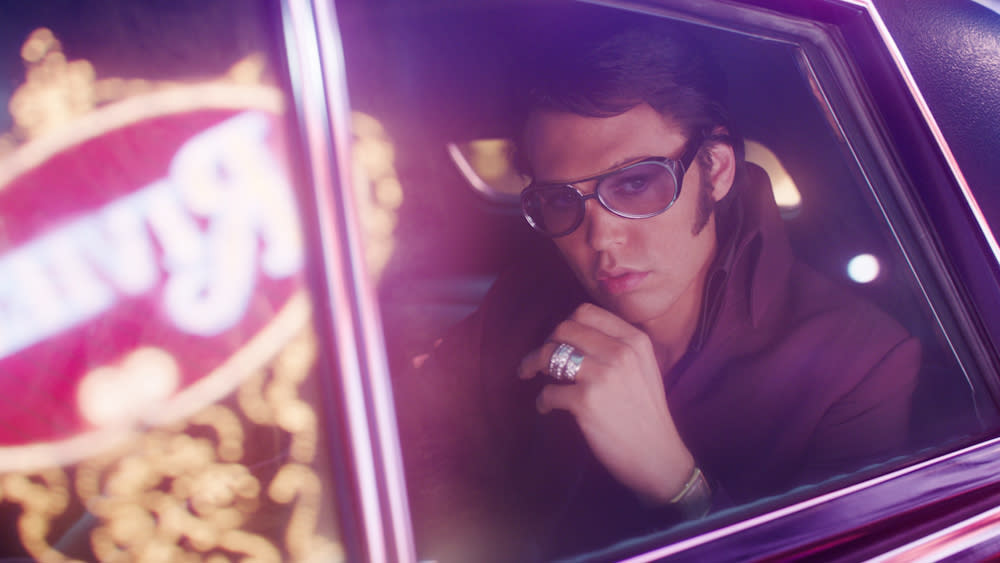
- Oops!Something went wrong.Please try again later.
- Oops!Something went wrong.Please try again later.
- Oops!Something went wrong.Please try again later.
- Oops!Something went wrong.Please try again later.
- Oops!Something went wrong.Please try again later.
- Oops!Something went wrong.Please try again later.
- Oops!Something went wrong.Please try again later.
- Oops!Something went wrong.Please try again later.
Baz Luhrmann’s “Elvis” is an overwhelming sensory experience in which all the tools of cinema are utilized to convey not only what it was like to watch and hear Elvis Presley (Austin Butler) in his prime but what it was like to be Elvis — and what it was like to be Colonel Tom Parker (Tom Hanks), the man who both elevated and exploited The King of Rock ‘n’ Roll. The movie meticulously recreates the surface details of Presley’s life and times but goes further to convey the emotional state of American culture at large in the decades during which Elvis was at its center — and how that emotional state transformed across the decades.
In the videos below, cinematographer Mandy Walker, production and costume designer Catherine Martin, and editors Jonathan Redmond and Matt Villa discuss how their attention to journalistic detail intersected with an expressionistic approach to create a great pop epic that pays full tribute to its title character — and takes full advantage of the awe-inspiring performance of the man who plays him.
More from IndieWire
The Rocket Fuel of 'Guardians of the Galaxy Vol. 3' Visual Effects
'I Feel Such a Responsibility': Inside Making of 'Killers of the Flower Moon'
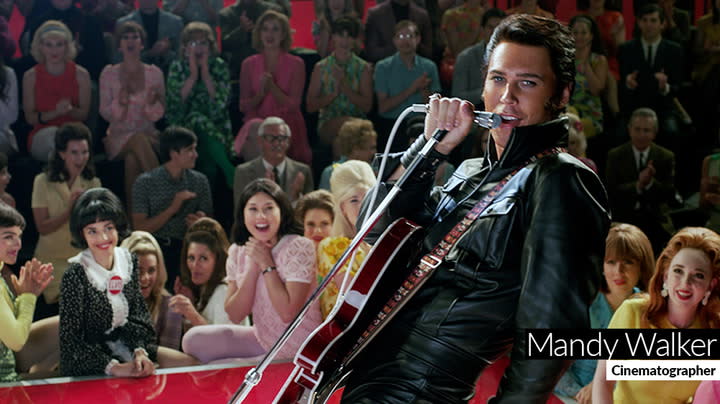
The Cinematography of “Elvis”
Mandy Walker made history this year by becoming the first woman to win an Australian Academy of Cinema and Television Arts Award for Best Cinematography — a testament to both her stunning recreations of archival footage in “Elvis” and her ability to find new means by which to visually express Presley as both a man and a cultural phenomenon. “How do we make him iconic? I always kept that in the back of my mind,” Walker told IndieWire. The first step was thinking about visual references director Baz Luhrmann and production and costume designer Catherine Martin had compiled in a book of photographs and other documents of the time in which Elvis lived; the second was getting a close look at actor Austin Butler during the audition process, even before he was formally cast as The King. “Baz knew pretty much straight away that it was him. So I was there during Austin’s audition, taking photos with my Leica just to look at angles on his face and see where he most looked like Elvis.”
After exploring how Butler’s face and movements registered on camera, Walker collaborated with Panavision wizard Dan Sasaki to build lenses from scratch that would emulate the existing photography of Elvis from different periods in his life. She saw the film in terms of two distinct types of visual language, one being the moments Luhrmann wanted to painstakingly recreate from well-known footage like Presley’s 1968 “Comeback Special” or his final performance in Las Vegas. For sequences like these, Walker kept an iPad containing the original footage with her as she walked the sets, plotting out where the cameras would go and planning how to replicate the period lighting. The second type of visual language was more expressionistic and stylized, as Walker tried to find ways to put the audience in Elvis’ shoes or in a seat at one of his concerts; for these scenes the camera had to “dance” with the actors, and Walker’s team collaborated closely with the performers to make sure the camera and choreography were in perfect alignment to depict that excitement. For more on Walker’s approach to the cinematography of Elvis, watch the video above.
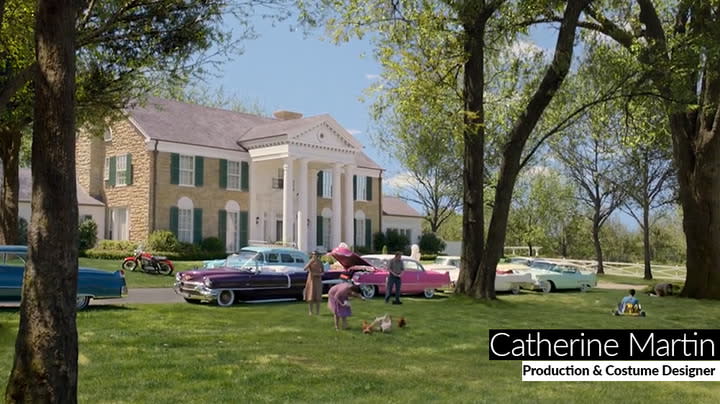
The Production Design of “Elvis”
Like Mandy Walker, production designer Catherine Martin wanted “Elvis” to both honor its title character and give a sense of just what he meant to the world. “We needed to make sure that people understood the historical context visually,” she told IndieWire, “and also reveal things that we as a modern audience are possibly desensitized to or have forgotten.” For Martin, the core of the film was the relationship between Elvis and his brilliant but unscrupulous manager Colonel Tom Parker. “What really piqued my interest was this idea of the relationship between art and commerce and this extraordinary manager who pioneered so many things that we take for granted today.” The opportunity to explore these ideas against the historical backdrop Luhrmann had in mind proved irresistible to Martin. “All this against a segregated South, a very prosperous 1950s America that allowed for an exploding youth culture that had disposable income that could buy records, and the fact that this man’s career spanned enormously defining decades of the 20th century… things just changed so radically from the beginning if the 1950s to the end of the ’70s.”
As is frequently the case in her decades-long partnership with Luhrmann, Martin took on both production and costume design duties on “Elvis,” allowing her to adopt a fully integrated approach to the visual language. “I love the fact that the costumes and the sets are able to seamlessly talk to each other,” she said, “because a lot of time clothes are the set. A third of a movie is basically the close-up.” To tell Presley’s sweeping story and show how his fortunes rose and fell parallel with or in opposition to the culture, Martin chose different looks for each decade, showing how he evolved, in her words, “from a punkish disruptor to [a man] in command of his supreme masculinity.” As with the cinematography and other crafts on “Elvis,” the mission was always twofold: fidelity to the details of history and a drive to express what it was like to be there. “Baz always says to me, ‘I know it may have looked like that, but what did it feel like to be there?’ There’s a big barrier of time, of interpretation, of cultural changes?’ How do you take that and translate it so that you are faithfully historically but connecting universally?” To hear more about how Martin recreated Elvis Presley’s life and times, check out the above video.
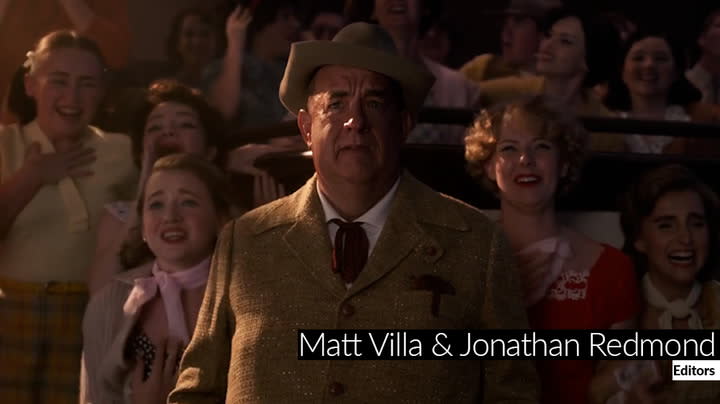
The Editing of “Elvis”
The cutting in a Baz Luhrmann movie is always characterized by its extreme level of complexity and ambition, and “Elvis” is no different as it deftly juggles three points of view: the perspective of Elvis himself, the perspective of Colonel Tom Parker, and the perspective of the culture at large. This made editing the concert sequences, which Luhrmann staged and shot in their entirety, particularly challenging for editors Jonathan Redmond and Matt Villa. “You could cut the whole concert looking at nothing but Elvis, you could cut the whole concert looking at nothing but the ecstatic fans, or you could cut the whole thing looking at nothing other than Colonel Tom Parker looking in awe at what he was seeing” said Villa, adding that in the end, the story was the guide. “Each set piece had something different to say narratively and we tried to reflect that in the cutting.” To that end, the “Louisiana Hayride” sequence where Elvis first captivates an audience was frenetically cut to convey the jittery thrill of the moment, while the “Comeback Special” performances that present an older, more confident Elvis were considerably more restrained.
A key guiding principle for the editors was avoiding the conventions of biographical films that had come before. “Baz is always super clear about what he wants, and he’s even clearer about what he doesn’t want,” Redmond said. “He was pretty forthright about this not being a conventional biopic. In fact, ‘biopic’ was a bit of a dirty word throughout the project.” Redmond and Villa avoided clichés by going deep into the individual characters’ perspectives, telling the first part of the film from Parker’s point of view and subtly shifting to Elvis’ emotional experience, but always keeping that relationship as their North Star. “We really had to focus on how the Colonel was constantly manipulating Elvis behind the scenes,” Redmond said, noting that a scene like the one in which Parker commits Elvis to a gilded cage at the International Hotel weaves Parker’s actions in and out of Presley’s onstage performance — a performance expertly emulated by Butler. “Austin’s performances were so incredible and so spot-on, every flick of the wrist, every nervous moment — he just nailed it.” Hear more about how Redmond and Villa showcased Butler’s performance and placed it at the center of a broader narrative in the video above.
READ MORE CRAFT CONSIDERATIONS
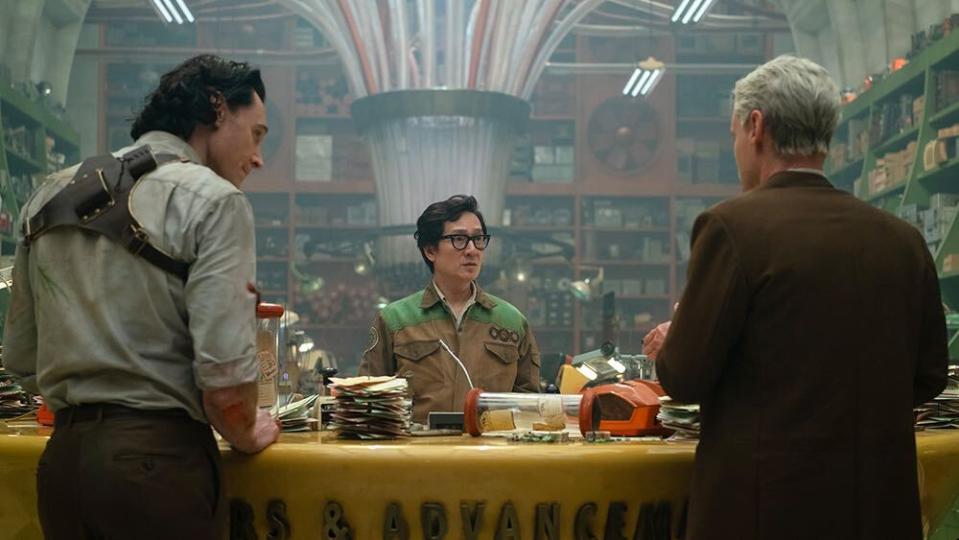
Craft Considerations
‘Loki’ Season 2 Was as Wild and Unpredictable as Its Title Character
Star Tom Hiddleston, showrunners Justin Benson and Aaron Moorhead, and production designer Kasra Farahani seized new opportunities to bring fresh depth to the series.
By Jim Hemphill
7 hours ago
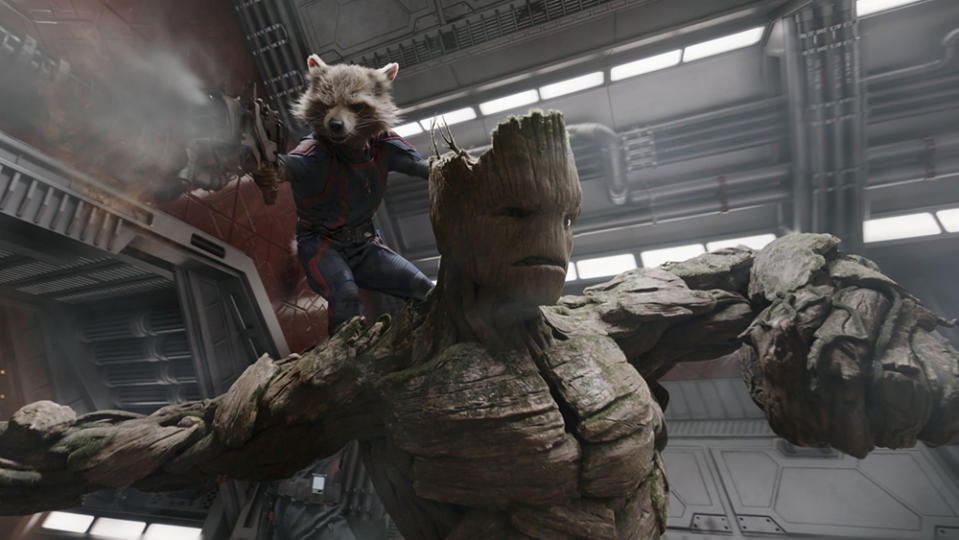
Craft Considerations
The Rocket Fuel of ‘Guardians of the Galaxy Vol. 3’ Visual Effects
The VFX Oscar nominee boasts expressive and detailed animation for Rocket and Groot, plus a two-minute, single-shot, climactic battle.
February 14, 2024 4:30 pm
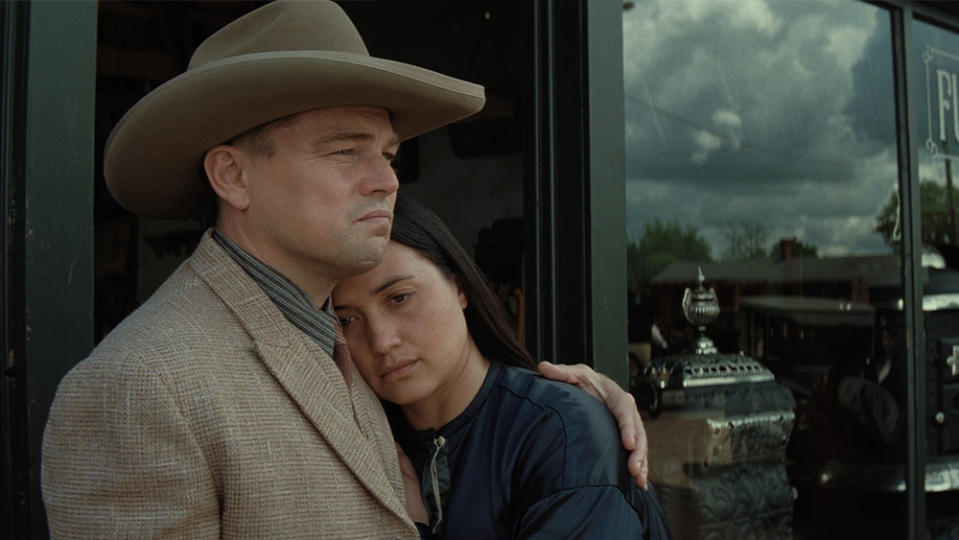
Craft Considerations
‘I Feel Such a Responsibility’: Inside Making of ‘Killers of the Flower Moon’
Watch costume designer Jacqueline West, cinematographer Rodrigo Prieto, and production designer Jack Fisk explore the visual language of “Killers of the Flower Moon.”
By Jim Hemphill
January 9, 2024 3:30 pm
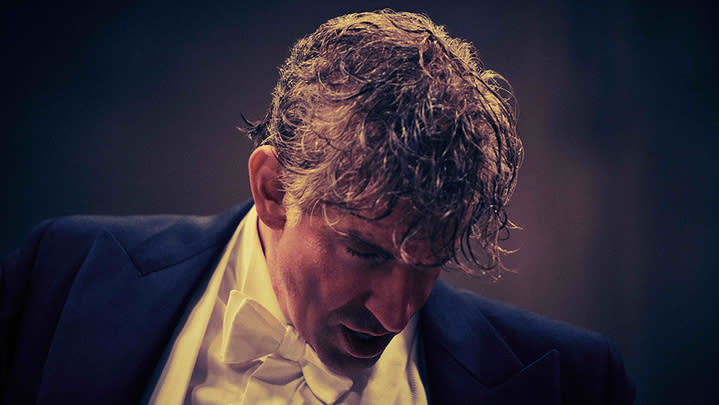
Craft Considerations
How ‘Maestro’ Hit the Notes of Leonard Bernstein’s Life
Watch cinematographer Matthew Libatique, costume designer Mark Bridges, and production designer Kevin Thompson break down the cinematic movements of “Maestro.”
December 27, 2023 12:00 pm
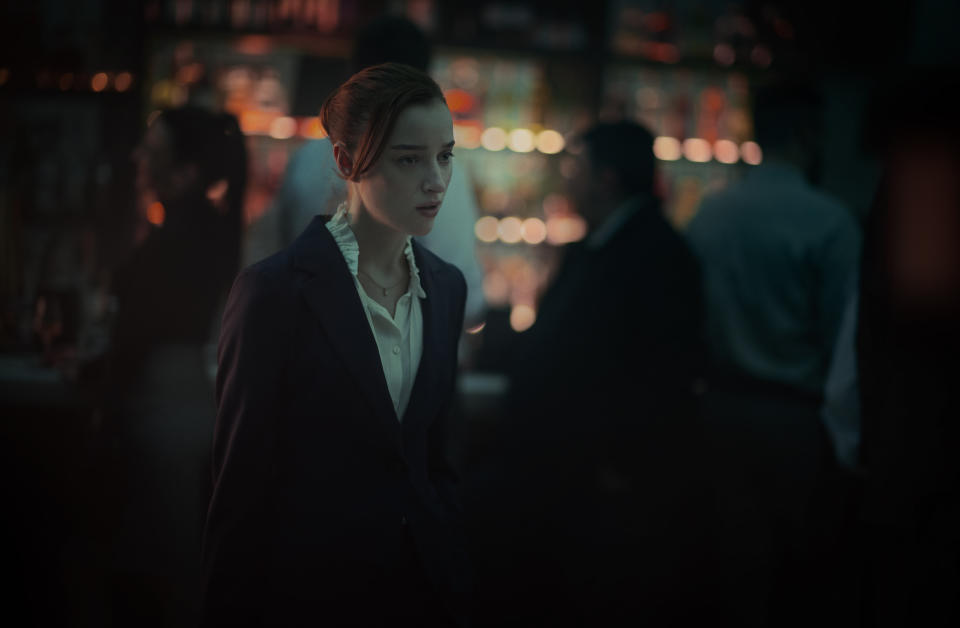
Craft Considerations
‘Risk Fuels Me’: Writer/Director Chloe Domont on Her Explosive ‘Fair Play’
The first-time filmmaker behind the Netflix thriller took some big swings — here’s how they paid off.
By Jim Hemphill
December 22, 2023 1:30 pm

Craft Considerations
‘Twisted Metal’ Recreated the Video Game’s Iconic Vehicles
Watch how production designer Victoria Paul and picture car coordinator Ty Guidroz crafted the deadly cars for the post-apocalyptic series.
By Daron James
November 27, 2023 2:30 pm
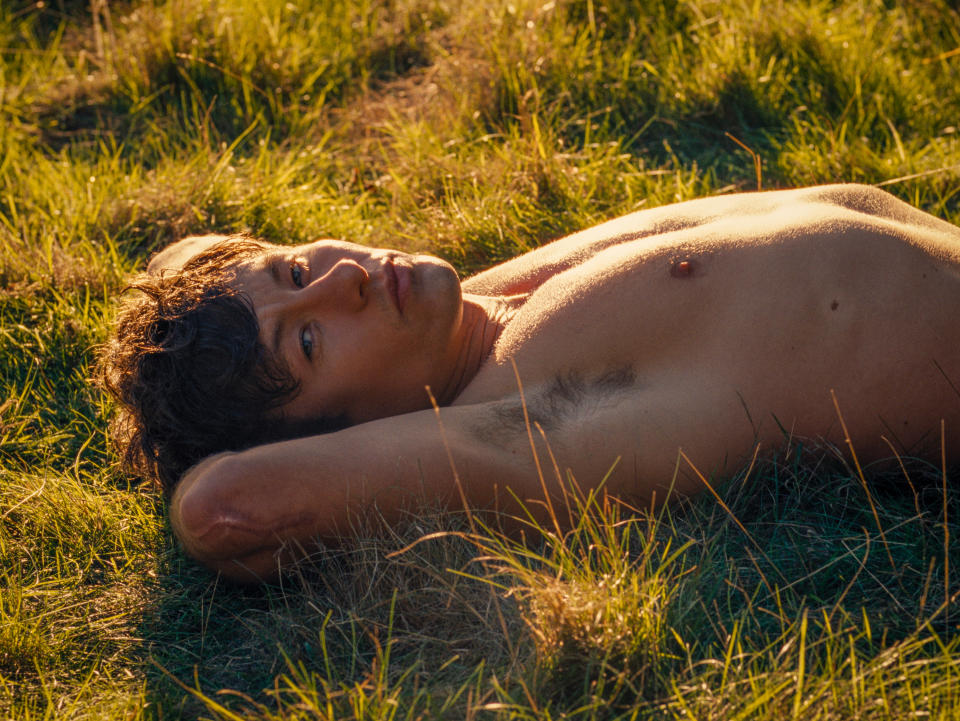
Armpit Hair & Wallpaper — the Pain & Glee of ‘Saltburn’ Is in Its Details
Watch how director Emerald Fennell, editor Victoria Boydell, and production designer Suzie Davies built the Gothic romance that millennials deserve.
November 20, 2023 2:00 pm

Craft Considerations
‘Daisy Jones and the Six’ Creates a ’70s Band — and Recreates the ’70s
Watch how the music, costume, and production design teams helped make it look like Daisy Jones and the Six were the best ’70s band you’ve never heard of.
November 13, 2023 2:00 pm
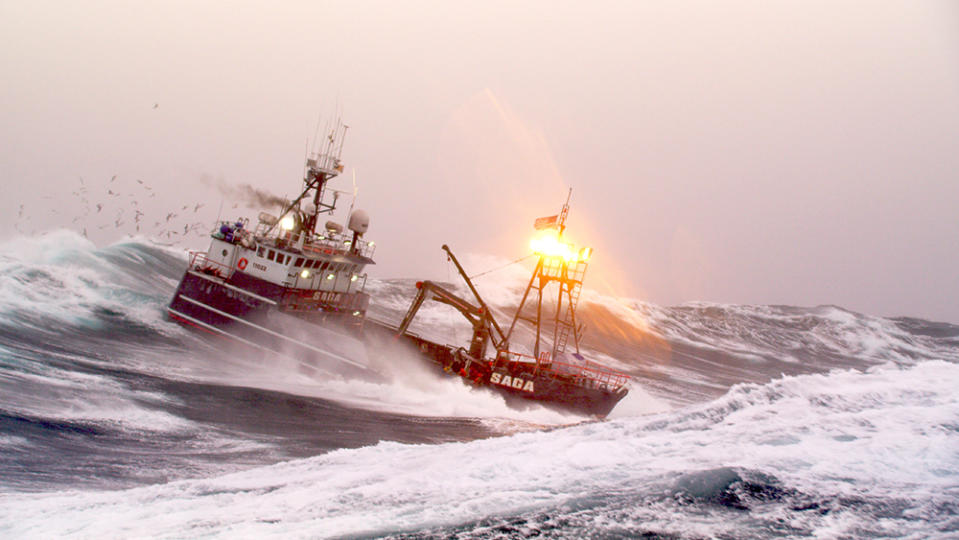
Craft Considerations
The ‘Deadliest Catch’ of All? Capturing Epic Footage on Dangerous Seas
The editor and cinematographer break down how they turn 25,000 hours of footage into a compelling, cohesive story.
By Chris O'Falt
August 18, 2023 3:00 pm
Best of IndieWire
The 13 Best Thrillers Streaming on Netflix in May, from 'Fair Play' to 'Emily the Criminal'
The Best Father and Son Films: 'The Tree of Life,' 'The Lion King,' and More
The 10 Best Teen Rebellion Films: 'Pump Up the Volume,' 'Heathers,' and More
Sign up for Indiewire's Newsletter. For the latest news, follow us on Facebook, Twitter, and Instagram.

